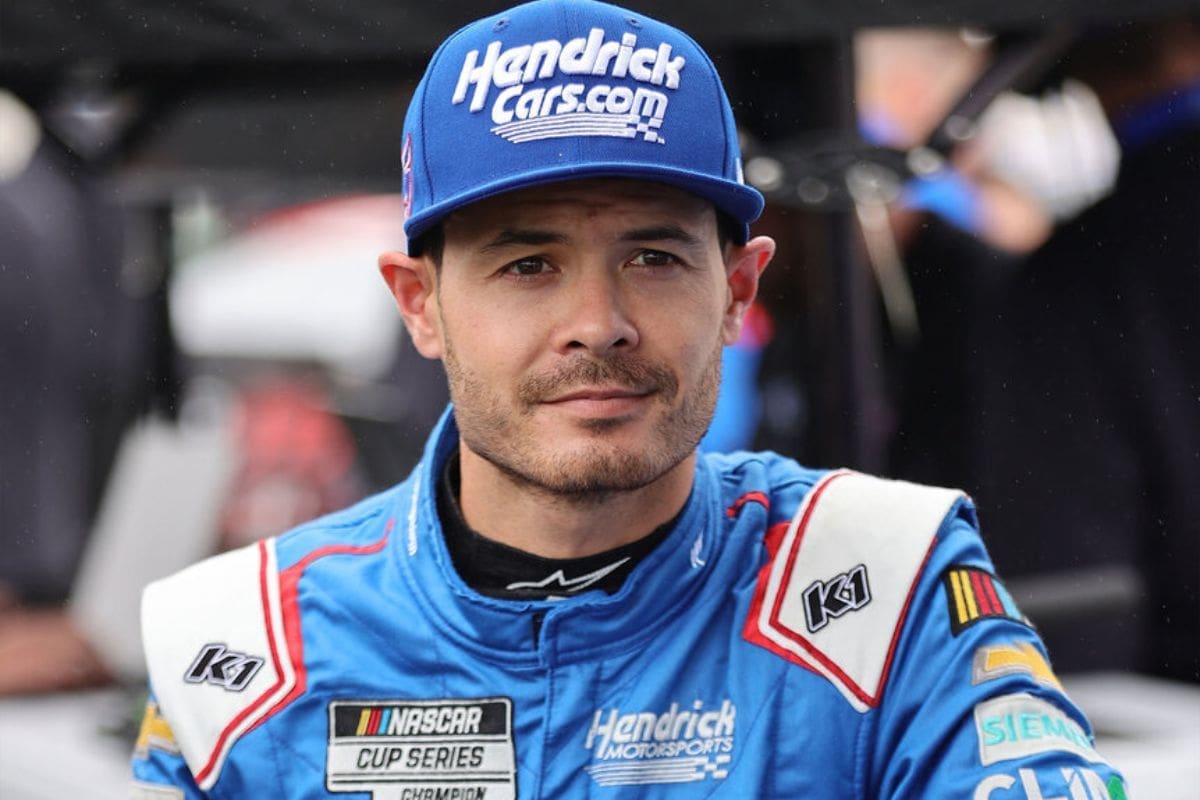Kevin Harvick on Kyle Larson’s Controversial Restart: In the aftermath of the Brickyard 400, Kevin Harvick‘s reflections on Kyle Larson‘s controversial restart action invite a deeper examination of racing strategy under strain. Harvick’s insights reveal not only Larson’s tactical shrewdness but also the broader implications of situational awareness in such environments. While some critics question the integrity of Larson’s maneuver, Harvick emphasizes the fine line between opportunism and fairness in motorsport. This discussion raises crucial questions about competitive ethics and the evolving nature of racing tactics—issues that merit further exploration as the season progresses.
Key Highlights
- Harvick acknowledged Larson’s impressive restart execution, which capitalized on the chaotic situation at Indy.
- He noted that Larson’s decision-making during restarts significantly influenced the race outcome.
- Harvick emphasized the importance of situational awareness, which Larson demonstrated effectively in the final laps.
- The tactical gamble of positioning behind Keselowski was seen as a risky but successful strategy by Larson.
Kevin Harvick’s Review of the Brickyard 400 Restart
In his analysis of the Brickyard 400 restart, Kevin Harvick frequently highlights the tactical implications of Brad Keselowski’s decision to pit, which ultimately shifted the competitive landscape in favor of Kyle Larson. Harvick points out that Keselowski’s premature entry into the pits not only altered his position but also reshaped the dynamics of the race.
By opting for fresh tires when the field was poised for an overtime restart, Keselowski inadvertently relinquished the essential inside line to Larson and Ryan Blaney, both of whom had shown strong performance throughout the race. This decision proved significant, as Larson, starting from the front row, was afforded a distinct advantage.
Harvick emphasizes that the inside line at Indianapolis Motor Speedway is often more favorable, particularly during restarts when drivers aim to consolidate their positions quickly. Larson’s positioning allowed him to capitalize on the ensuing chaos, asserting his dominance as he navigated through the final laps.
Moreover, Harvick notes the mental aspect of the restart, where Larson benefitted from being in a position to dictate the pace and control the flow of the race. The impact of Keselowski’s choice reverberated through the field, showcasing how one tactical decision can profoundly influence race outcomes.
Harvick’s Assessment of the Restart
Kevin Harvick provided a subtle assessment of the restart, emphasizing that both Kyle Larson and Ryan Blaney launched simultaneously, with Larson gaining an edge through superior momentum. In dissecting the crucial moment, Harvick noted that while Blaney was designated as the control car, Larson’s execution of the restart was commendable.
“The restart was tight. I went back and watched it a couple of times. I don’t see anything that I would call a penalty or Larson jumping the start. I think they just took off about the same time, and he just beat Blaney through the gears, it looked like to me. So, a very unique scenario that ultimately ended up being the thing that won him the race.” – harvick
Harvick’s analysis highlights the intricacies involved in race restarts, where timing and acceleration play critical roles. The ability to react quickly while maintaining control is vital, and Larson’s proficiency in this regard stood out.
Moreover, Harvick’s commentary reflects an understanding of the subtleties that govern race strategy. The thin margins in NASCAR often hinge on such moments, where a driver’s skill can alter the dynamics of the race. In this case, Larson’s performance during the restart ignited speculation about its legality and highlighted the competitive spirit that defines the sport.
Harvick on Larson’s Awareness of the Restart Control
Harvick emphasized that Larson’s lack of awareness regarding who controlled the restart added an intriguing layer to the tactical dynamics of the race. This oversight not only influenced Larson’s approach but also shaped the plans of his competitors. Without a clear understanding of the restart protocol, Larson’s position on the front row could have been both an opportunity and a potential pitfall. Harvick remarked, “The restart situation with Brad pulling off the racetrack and Kyle assuming the front row on the inside on the restart—I’m not sure that, well, I know, I’m sure that Kyle Larson didn’t know whether he was in control or not in control,” indicating that this uncertainty may have affected Larson’s decision-making in a high-stakes scenario.
Despite Larson’s impressive drive through the field, Harvick pointed out that several factors aligned favorably for the No. 5 HMS Chevy driver. This underscores the intricate nature of racing strategy, where control and awareness can greatly alter outcomes. Ultimately, Larson’s performance was commendable, yet it raises questions about the importance of situational awareness in racing, an element that often separates the elite from the rest.
Larson’s Insights on the Overtime Restart
Larson’s reflections on the overtime restart reveal the complexities of decision-making under strain, particularly regarding his tactical choice to position himself behind Brad Keselowski. This strategy was predicated on the anticipation that Keselowski’s No. 6 Ford Mustang might be vulnerable to a fuel shortage, a gamble that highlighted Larson’s acute awareness of the race’s dynamics. By opting to align himself with Keselowski, Larson positioned himself for an advantageous restart, albeit with uncertainty about who would ultimately control the pace.
During the pivotal moment, Larson openly admitted to Kevin Harvick that he was uncertain about the control car‘s identity, initially assuming it was Ryan Blaney. This ambiguity emphasized the chaotic nature of restarts in NASCAR, where split-second decisions can dictate the outcome. Larson’s admission that both he and Blaney “eased into the throttle at the same time” exemplifies the inherent challenges drivers face when maneuvering in such situations.
“I had no clue at that point, like who was the control car. I had assumed it was Blaney, but both of our paces were kind of up and I feel like we both eased into the throttle at the same time. I think we both didn’t really quite know who was the control car… So we kind of both just went at the same time.” – Larson

The decision-making process is compounded by the tension of the moment, as Larson showed through his actions. Ultimately, his ability to capitalize on a potentially advantageous situation, combined with a willingness to adapt to the unfolding scenario, displays the intricate interplay of strategy and instinct that defines elite-level racing.
News in Brief: Kevin Harvick on Kyle Larson’s Controversial Restart
The analysis of Kyle Larson’s restart tactic at the Brickyard 400 reveals the complexities inherent in racing strategy.
Kevin Harvick’s reflections emphasize the significance of situational awareness and adaptability in high-pressure environments.
While the controversy surrounding Larson’s actions may provoke debate regarding fairness, the effectiveness of his approach highlights an essential aspect of competitive racing—anticipating and responding to dynamic conditions.
Ultimately, Larson’s tactical execution exemplifies the fine line between strategy and controversy in motorsport.
ALSO READ: Kyle Larson’s Indy 500-Coke 600 Plans: Can He Handle Both Races?





